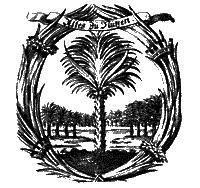| Revision as of 19:29, 21 October 2024 editChris the speller (talk | contribs)Autopatrolled, Extended confirmed users, Pending changes reviewers867,549 editsm →Life: replaced: Director → director, Altmark → AltmarkTag: AWB← Previous edit | Latest revision as of 05:30, 28 December 2024 edit undoJohnpacklambert (talk | contribs)Autopatrolled, Extended confirmed users, Pending changes reviewers601,542 editsNo edit summaryTags: Mobile edit Mobile web edit Advanced mobile edit | ||
| (2 intermediate revisions by one other user not shown) | |||
| Line 2: | Line 2: | ||
| == Life == | == Life == | ||
| ]He was born into one of the most prominent ] families as the son of ] and brother of ], who were instrumental in introducing ] and ] to Brandenburg. Both had also held the rank of ] and ] of the ]. | ]He was born into one of the most prominent ] families as the son of ] and brother of ], who were instrumental in introducing ] and ] to Brandenburg. Both had also held the rank of ] and ] of the ].{{citation needed|date= October 2024}} | ||
| Following private tutoring at home, Knesebeck studied at the universities of ], ], ], ], and ] from 1607 to 1616.<ref name="Fruchtbringende Gesellschaft"></ref> He then embarked on the traditional ] for two years, visiting Geneva, Italy, France, England, and the Netherlands. | Following private tutoring at home, Knesebeck studied at the universities of ], ], ], ], and ] from 1607 to 1616.<ref name="Fruchtbringende Gesellschaft"></ref> He then embarked on the traditional ] for two years, visiting Geneva, Italy, France, England, and the Netherlands. | ||
| Line 12: | Line 12: | ||
| At the Anhalt court, Knesebeck married Anna Lucretia von Erlach on December 6, 1624. After his father’s death in 1625, he returned to manage the family estate at ] until he was appointed ] of the ] in 1626 to address the growing conflict. In 1646 he was made ] of the Altmark. A few years later he was elected director of the Altmark Knighthood.<ref name="Bibliotheksservice-Zentrum Baden-Württemberg''></ref> | At the Anhalt court, Knesebeck married Anna Lucretia von Erlach on December 6, 1624. After his father’s death in 1625, he returned to manage the family estate at ] until he was appointed ] of the ] in 1626 to address the growing conflict. In 1646 he was made ] of the Altmark. A few years later he was elected director of the Altmark Knighthood.<ref name="Bibliotheksservice-Zentrum Baden-Württemberg''></ref> | ||
| His wife died on November 22, 1630. After a somewhat short year of mourning, Knesebeck married his second wife, Anna von Jagow, on August 17, 1631. He had two sons with her, Achaz and Thomas, both of whom would also go on to serve as governors of the Altmark. | His wife died on November 22, 1630. After a somewhat short year of mourning, Knesebeck married his second wife, Anna von Jagow, on August 17, 1631. He had two sons with her, Achaz and Thomas, both of whom would also go on to serve as governors of the Altmark.{{citation needed|date= October 2024}} | ||
| == References == | == References == | ||
| Line 22: | Line 22: | ||
| ] | ] | ||
| ] | ] | ||
| ] | ] | ||
| ] | |||
| ] | ] | ||
| ] | ] | ||
Latest revision as of 05:30, 28 December 2024
Hempo von dem Knesebeck (14 April 1595 – 19 June 1656) was a diplomat and Master of the Horse to Christian I. of Anhalt. He was later Privy Councillor and Landeshauptmann (governor) of the Altmark.
Life

He was born into one of the most prominent Brandenburg families as the son of Thomas von dem Knesebeck (the Elder) and brother of Thomas von dem Knesebeck (the Younger), who were instrumental in introducing Protestantism and Calvinism to Brandenburg. Both had also held the rank of Privy Councillor and Landeshauptmann of the Altmark.
Following private tutoring at home, Knesebeck studied at the universities of Helmstedt, Frankfurt (Oder), Wittenberg, Marburg, and Heidelberg from 1607 to 1616. He then embarked on the traditional Grand Tour for two years, visiting Geneva, Italy, France, England, and the Netherlands.
In 1618 he was appointed Valet de chambre and later Master of the Horse to Christian I. of Anhalt. He remained loyal to his master following the defeat at the Battle of White Mountain, the first major battle of the Thirty Years' War. He was appointed Privy Councillor and began a series of diplomatic missions, including Hungary, Livonia, Sweden, and Denmark. As a tutor, he also accompanied his student Prince Ernest to the Siege of Bergen op Zoom and later to Venice.
From 1624 to 1626, Knesebeck served a short period at the court of Louis I, Prince of Anhalt-Köthen. There, the prince admitted him into the prestigious Fruitbearing Society as the 88th member, giving him the title “The Good” (Der Gute).
At the Anhalt court, Knesebeck married Anna Lucretia von Erlach on December 6, 1624. After his father’s death in 1625, he returned to manage the family estate at Tylsen until he was appointed war commissary of the Altmark in 1626 to address the growing conflict. In 1646 he was made Landeshauptmann of the Altmark. A few years later he was elected director of the Altmark Knighthood.
His wife died on November 22, 1630. After a somewhat short year of mourning, Knesebeck married his second wife, Anna von Jagow, on August 17, 1631. He had two sons with her, Achaz and Thomas, both of whom would also go on to serve as governors of the Altmark.
References
- "Fruchtbringende Gesellschaft"
- ^ "Fruchtbringende Gesellschaft"
- "Bibliotheksservice-Zentrum Baden-Württemberg"